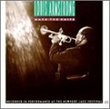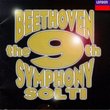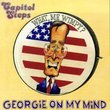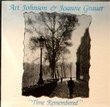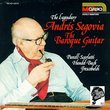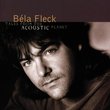| All Artists: Bach, Newman Title: 24 Preludes & Fugues 1 Members Wishing: 0 Total Copies: 0 Label: Vox (Classical) Release Date: 11/4/1992 Genre: Classical Styles: Historical Periods, Baroque (c.1600-1750), Instruments, Keyboard Number of Discs: 2 SwapaCD Credits: 2 UPC: 047163501326 |
Search - Bach, Newman :: 24 Preludes & Fugues 1
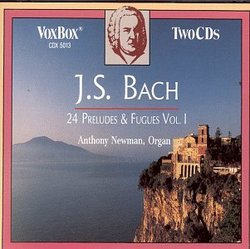 | Bach, Newman 24 Preludes & Fugues 1 Genre: Classical
|
Larger Image |
CD DetailsSimilarly Requested CDs
|
CD ReviewsEgotistical; rotten acoustics. (nice instrument, though.) mspalmer@prodigy.net | Columbus, Ohio | 09/05/1999 (1 out of 5 stars) "I have one other recording by Anthony Newman: Bach's Art of Fugue played on a Casavant organ which was equal to the task of faithfully rendering Bach's music in all it's grandeur and clarity, but it was recorded in such a way as to suggest the microphones were placed at the windchests: you had no idea of the acoustics of the church the organ resided in, unless you could listen carefully enough for brief pauses in the music. Although "Art of Fugue" listed in the credits the church the recording was made in, we have no such luxury here. (Perhaps the elders at THIS church previewed the recording and decided they would not have listeners believe the church had more carpeting than the Astrodome, and therfore requested the church and organ remain anonymous). Although Mr. Newman plays with flawless technique, he obviously took a page out of Virgil Fox's book on interpreting Bach. He throws enough extracurricular ornamentation into such works as "Fantasy & Fugue in G minor" to render the outset of the Fantasy nearly unrecognizable. It brings to mind the words of Mozart's patron (from the film "Amadeus"): "Too many notes." Mr. Newman does select some thought-provoking registrations at places in certain selections which struck me as quite refreshing, but, as a whole, I found this VoxBox offering a disappointment. I'm ready to go back to E. Power Biggs, bad edits and all." Newman is good, if a bit flamboyant Duane Meeter | Tallahassee, FL USA | 11/11/2001 (5 out of 5 stars) "That's what our church organist (Ph.D., Eastman) said when I asked him about Newman, after I had bought and enjoyed the above recording. (I have heard so many BAD recordings of the Toccata and Fugue in D minor that I was relieved to hear it played sensibly on this wonderful CD.)I'm sorry if one reviewer didn't like Newman's added notes; he should look up 'ornaments' in the Norton/Grove concise Encyclopedia of Music - or listen to contemporary soloists in Handel's Messiah for ornamentation in the spirit of the Baroque and classical eras.Is the recording dry? Yes - but it's not muddy, as cathedral organ music is. Every week I sit five feet from a 22-stop tracker action organ built in the North German style and hear glorious music, often Bach, performed impeccably. Our church seats 300 and doesn't have cathedral acoustics - I still get a thrill from Bach, played well." Sabotaged by Technical Brilliance Virginia Opera Fan | Falls Church, VA USA | 09/15/2006 (1 out of 5 stars) "Mr. Newman is an admirable technician whose manual and pedal virtuosity are truly extraordinary. Unfortunately, his dexterity gets in the way of the music. At these hyperkenetic speeds the effect is the aural equivalent of disco-era strobe lighting. Thank you, but I don't like it at all. I don't like dutiful plodding in Bach's organ works either, but the music needs a little breathing space for the granduer to make its effect. The chorale based preludes aren't badly done at all. It's a shame that some of the reflection exhibited in the chorale works didn't filter into the free compositions. Yes, the notes are all there, but the polyphony doesn't have time to register at these speeds. While I appreciate ornamentation in this music, it should add expression not the here-it-comes-again predictability we get in these run throughs. Mr. Newman also has a preference for garish, reedy registrations. All in all, the race to the finish line and the monotonous,blaring screech of the organ make for some unpleasant listening."
|

 Track Listings (11) - Disc #1
Track Listings (11) - Disc #1